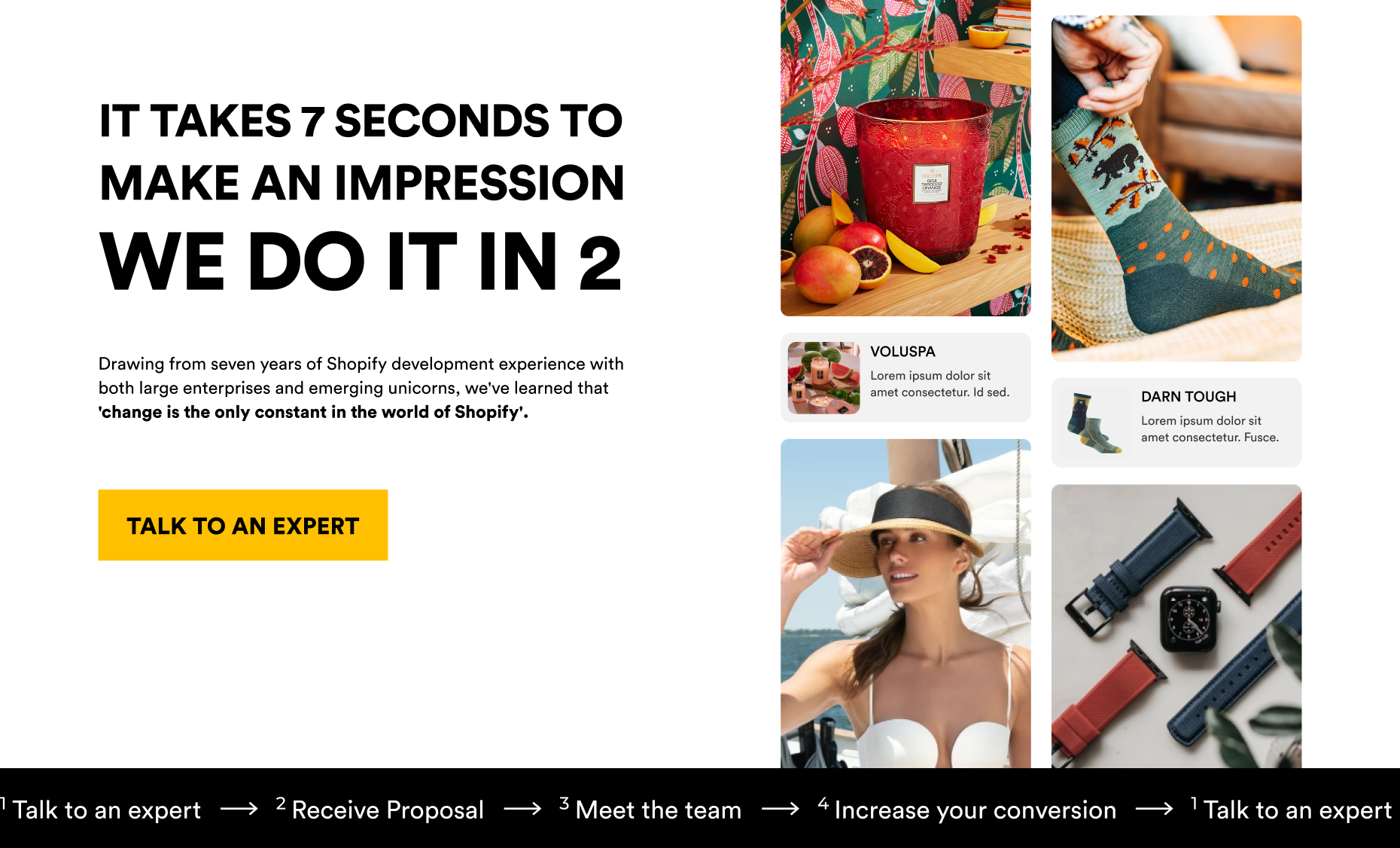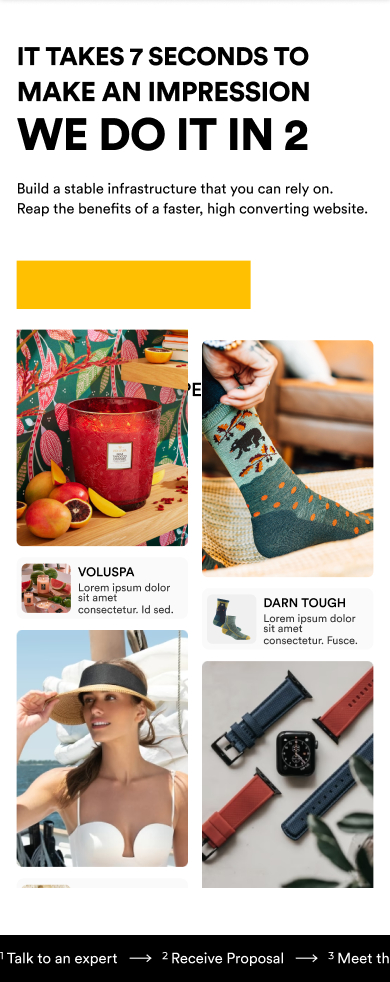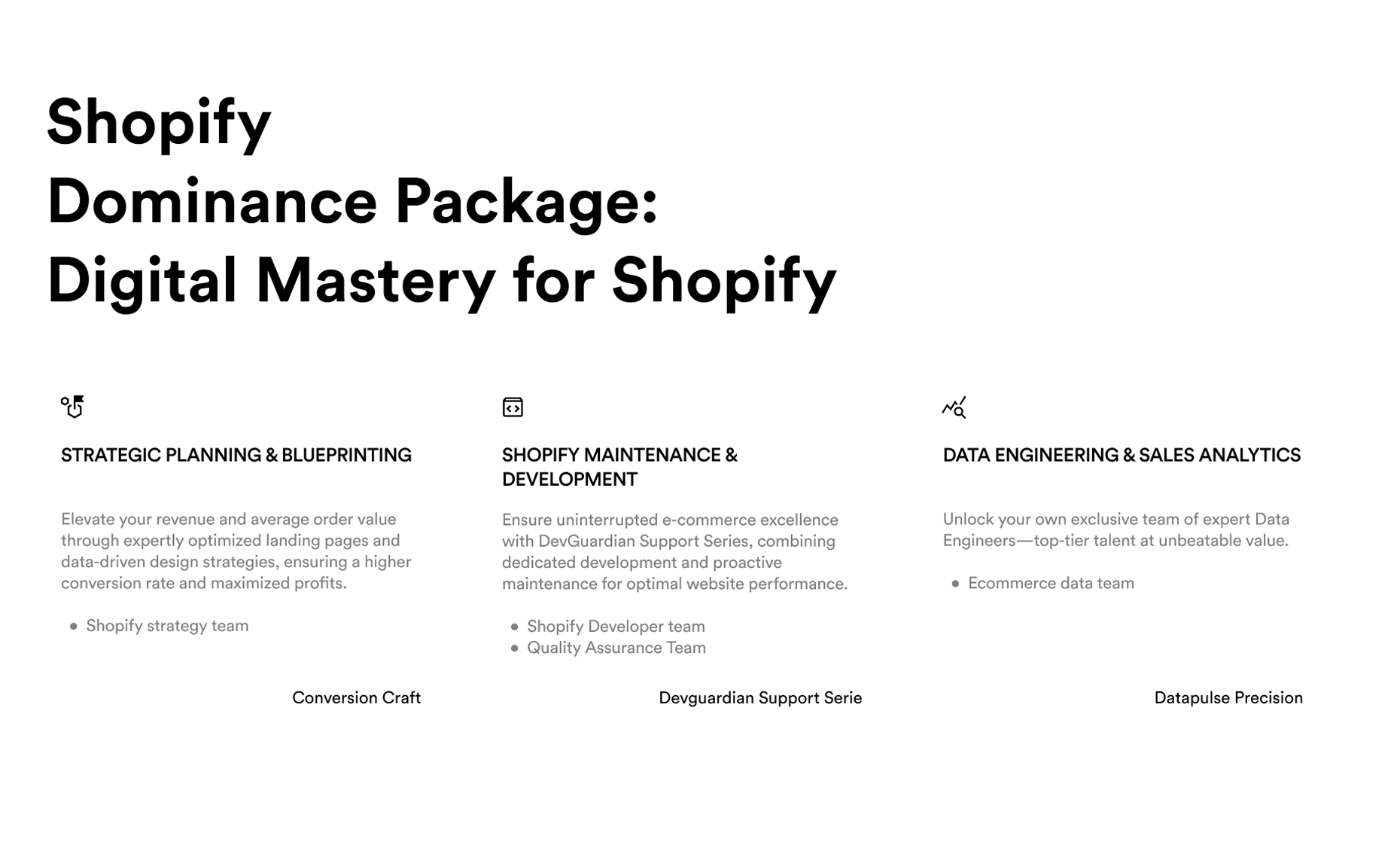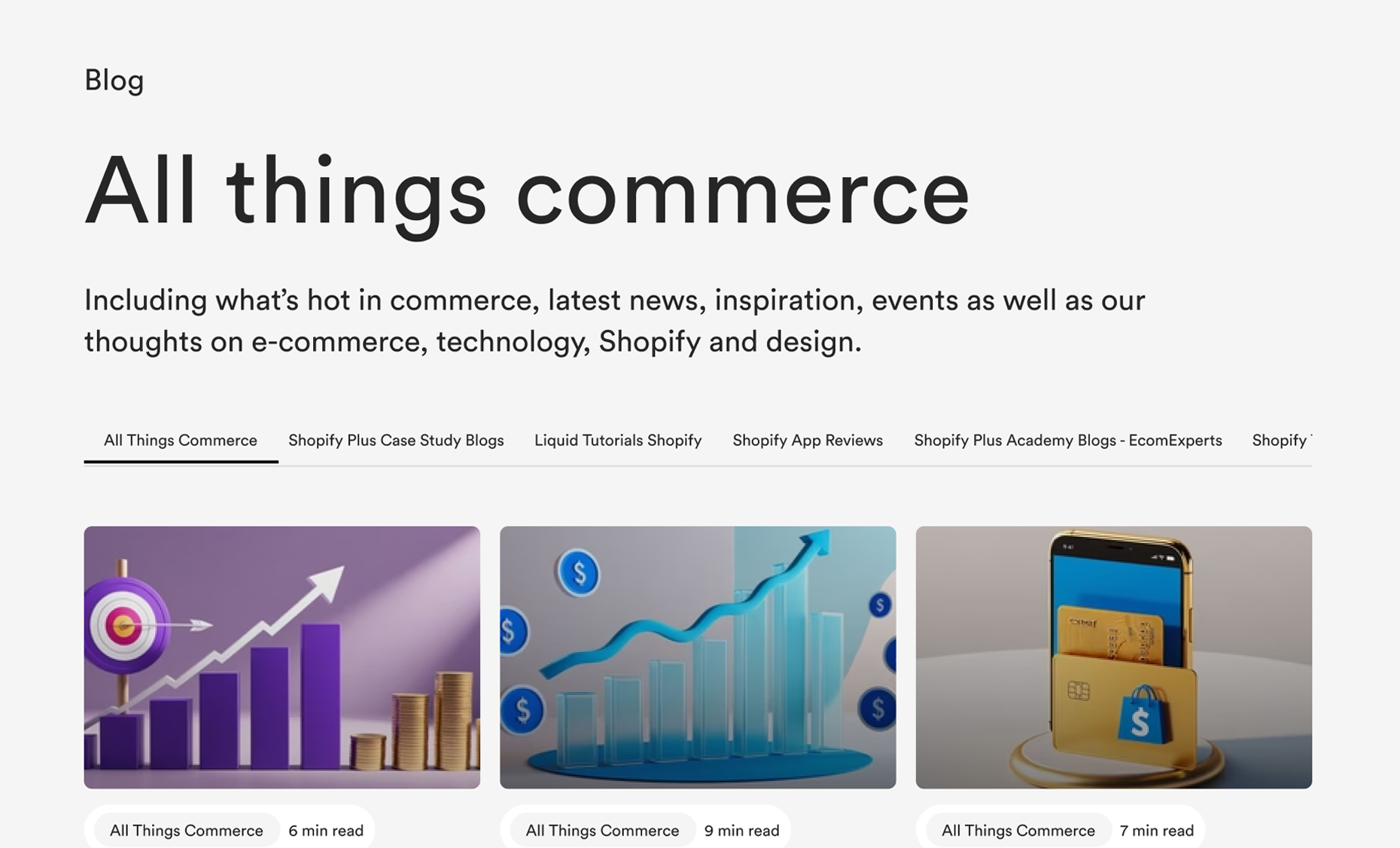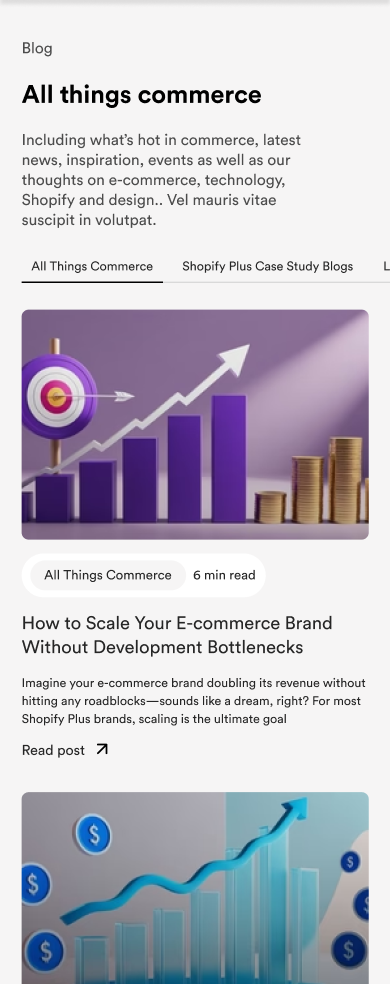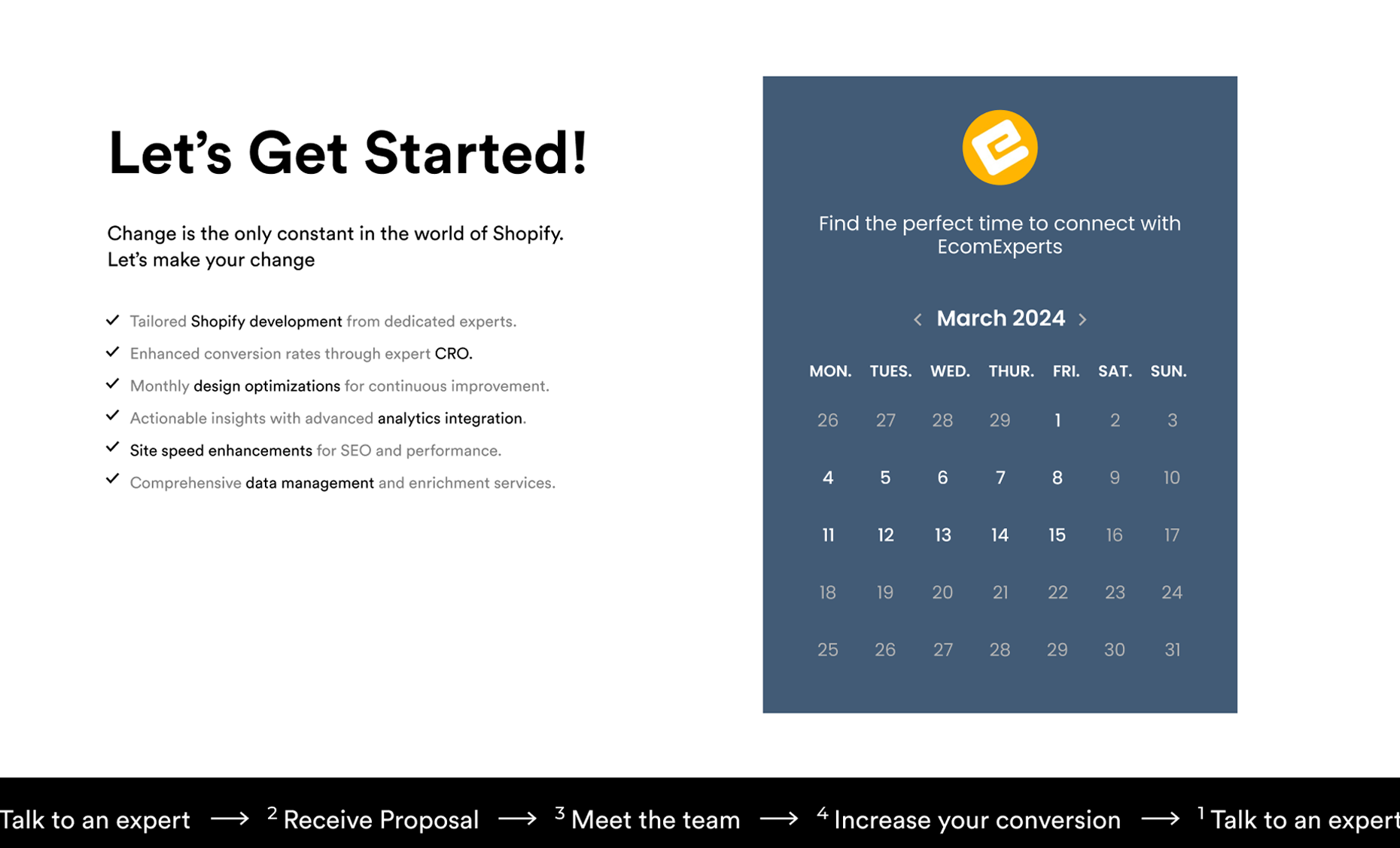Let’s face it—subscriptions have become a huge part of our lives. From Netflix keeping us entertained, to meal kits showing up right when we need them, subscriptions bring ease and consistency to things we care about. And it’s no different in e-commerce. For businesses, setting up a subscription model is a game-changer.
But here's the deal: creating a successful subscription-based Shopify store isn’t just about recurring payments. It's about delivering consistent value, keeping your customers happy, and scaling smoothly as your brand grows. Done right, it can bring in recurring revenue and build a loyal customer base that sticks with you for the long haul.
This guide is going to break down the tools you’ll need, the strategies to make sure your customers love what you're offering, and the best practices to help you get to that sweet, sweet recurring revenue.
Why Build a Subscription Model on Shopify?
Alright, so why Shopify? It’s one of the best platforms for launching a subscription model, especially if you’re already using it to run your store. Here’s why Shopify works so well:
- Flexibility & Scalability: Shopify integrates seamlessly with apps that support subscriptions. As your store grows, your subscription options can scale with it, so you never have to worry about whether your system can handle more customers.
- Smooth Integration: Shopify makes it easy to link subscription services directly with your product listings. Plus, you can choose from a range of third-party apps that help you manage subscriptions, track recurring payments, and analyze customer data.
- Subscription Trends are Skyrocketing: More customers prefer auto-replenishment (think about how easy it is when your shaving products or vitamins just show up every month). According to recent e-commerce stats, subscription-based businesses grew 437% in the past decade! That’s insane growth, and there’s plenty of room to carve out your slice of the pie.
Ready to dive deeper? Let’s talk tools.
Step 1: Choosing the Right Shopify Subscription App for Your Online Store
Now that we know why a subscription model can be a game-changer, let’s dive into how you can actually build one on Shopify. The first step? Choosing the right tools.
You’re probably wondering, "Which tools should I use to manage subscriptions on Shopify?" Thankfully, there are some powerful apps that will do the heavy lifting for you. Here’s a breakdown of the most popular and trusted ones:
1. Recharge

Recharge is the go-to subscription app for many Shopify store owners, and for good reason. It’s packed with features that make managing subscriptions a breeze.
With Recharge, you can easily offer subscriptions for almost any product and manage things like recurring payments, customer accounts, and even upselling opportunities.
- Why it’s awesome: Recharge allows customers to fully manage their subscriptions on their own, from skipping a shipment to swapping products or canceling their subscription altogether. And that’s huge for customer retention.
- Integration: Seamlessly integrates with Shopify, and it also connects with payment processors like Stripe and PayPal for smooth transactions. This tool is great if you’re scaling and need advanced reporting to track subscription growth.
2. Bold Subscriptions

Bold Subscriptions is another great app designed specifically for Shopify. With Bold, you can offer various subscription options, from weekly meal kits to monthly boxes. It also supports multiple subscription models like fixed or pay-as-you-go.
- Why it’s awesome: Flexibility. Bold allows you to create custom subscription offers and experiment with different strategies to see which one gets the most traction. You can also bundle products together, which is perfect if you’re running a box subscription.
- Integration: It integrates with Shopify’s admin and checkout process, making it easy to manage orders in one place. You can also create upsell and cross-sell opportunities for subscribers.
3. Skio

Skio is newer in the game but has already made a name for itself by focusing heavily on simplifying subscription management for both you and your customers. It takes the friction out of managing subscriptions while offering a super-smooth checkout experience.
- Why it’s awesome: It’s incredibly user-friendly and focuses on customer retention. The platform’s clean design and simplicity make it a great choice for first-timers. Plus, it’s all about getting customers to stay for the long term, thanks to features like one-click subscription management.
- Integration: Skio integrates tightly with Shopify’s system and is designed to work without glitches, even during high-traffic periods like Black Friday.
4. PayWhirl

PayWhirl is a highly customizable subscription app that offers a variety of subscription options. If you want to create complex subscription models that fit your business needs perfectly, this is the app for you.
- Why it’s awesome: With its flexibility, PayWhirl allows you to create all sorts of billing models—weekly, monthly, yearly, or even custom intervals. You can also offer trial periods or discounts to entice first-time subscribers.
- Integration: PayWhirl integrates effortlessly with Shopify’s payment gateways and checkout system, making it super easy to set up recurring payments.
Best Practices for Subscription Tools
Once you’ve picked your subscription tool, it’s time to make the most of it. Here are some best practices to follow to ensure success:
- Offer flexibility: Allow customers to skip a month, pause their subscription, or easily adjust their order. This minimizes cancellations and keeps customers satisfied.
- Create value: Focus on providing a real benefit with your subscription, whether it’s exclusive products, convenience, or cost savings.
- Automate as much as possible: Make use of automation features to reduce the workload. For instance, some apps let you automate email reminders, billing notifications, and shipping updates.
Step 2: Building a Subscription Strategy That Sticks
Once you’ve selected your subscription tool, it’s time to build a strategy that’ll keep customers coming back. Let’s face it, getting someone to subscribe is only half the battle.
Retention is where the real challenge lies—and the real value, too. Here’s how to create a subscription model that keeps people clicking "renew" month after month.
1. Offer Incentives for First-Time Subscribers
Getting people to sign up is all about providing them with an irresistible offer. Whether it’s a discount, a free trial, or exclusive content, you need something that grabs their attention and makes them think, "Why not?"
- Why it works: Studies show that discounts for first-time subscribers can increase conversion rates by up to 30%. Free shipping or a bonus item is a nice touch, but the key is to offer something of real value.
- Strategy in Action: Let’s say you’re a Shopify store selling subscription-based skincare products. You could offer a 10% discount on the first month or throw in a free product sample. It’s all about lowering that first-time subscriber friction.
2. Flexible Subscription Plans Keep People Hooked
Life gets in the way sometimes. Your customer’s cash flow changes, they forget about their subscription, or they simply lose interest. So how do you keep them hooked? Flexibility is your best friend here.
- Why it works: According to research, 52% of customers who canceled a subscription said they would have stayed if they had the option to pause or skip a month. Make it easy for your subscribers to adjust their plans based on their needs, without feeling locked in.
- Action Tip: Use a tool like Bold or Recharge that allows for easy plan modifications. You could let customers change delivery frequencies or swap products in their subscription box.
3. Build Trust with a Clear Cancellation Policy
Nobody wants to feel like they’re trapped in a subscription. Being transparent about how easy it is to cancel or change plans actually encourages people to subscribe because they know they’re not getting stuck.
- Why it works: Customers are more likely to sign up if they know they can cancel anytime without hassle.
- Action Tip: Highlight your cancellation policy during checkout. Make it clear in your email marketing campaigns that your subscription is risk-free and easy to manage.
4. Use Personalization to Build Long-Term Relationships
People love feeling like a brand understands their needs. When you add a personal touch to your subscription model, you can increase customer retention and even upsell new products down the road.
- Why it works: Personalized offers and recommendations can increase your sales by up to 20%, according to industry studies. When customers receive tailored recommendations, it makes them feel special and more likely to stick with your brand.
- Action Tip: Shopify’s customer data tools or subscription apps like Skio can help you gather insights on customer preferences. Use this data to personalize email campaigns, suggest products, or tailor subscription packages.
5. Gamify Your Subscription Model
Who doesn’t love a good game? Adding a gamification element to your subscription service can make the shopping experience more exciting and engaging, driving up customer retention.
- Why it works: Loyalty programs, points, and rewards give customers a reason to stick around. In fact, 75% of consumers are more likely to stay subscribed if they feel rewarded for their loyalty.
- Action Tip: Offer discounts or free products after a customer has stayed subscribed for three months. You can even create a point-based loyalty program, where the longer they stay, the more rewards they earn.
6. Invest in Customer Service to Reduce Churn
One of the biggest reasons customers cancel their subscriptions is poor customer service. Your team should be equipped to handle subscription-related queries efficiently and professionally.
- Why it works: Good customer service isn’t just a nice-to-have—it’s crucial. According to a study, 78% of customers have backed out of a subscription due to bad customer experiences.
- Action Tip: Use tools like Zendesk to streamline customer service responses. Train your support team to handle common subscription questions and issues quickly, so customers stay happy.
Step 3: Marketing Your Shopify Subscription Model for Maximum Reach
Now that you’ve set up a killer subscription model, it’s time to get the word out and start attracting subscribers. Marketing a subscription service is a little different from marketing standard products because you're asking for a long-term commitment, not just a one-time sale.
But don’t worry, we’ve got the strategies to help you get those loyal customers.
1. Email Marketing: Keep Subscribers in the Loop
Email marketing is hands-down one of the best ways to promote your subscription service. It’s direct, personal, and you’re talking to people who already want to hear from you.
- Why it works: Studies show that email marketing has an average return on investment (ROI) of 42:1. That’s huge! For subscription models, regular email updates can keep your audience engaged, informed, and excited.
- Action Tip: Start with a killer welcome email when someone subscribes. Follow it up with regular newsletters, subscriber-only offers, or sneak peeks of upcoming products. Use Shopify’s email marketing tools or apps like Klaviyo to automate this process and segment your subscribers for personalized emails.
2. Social Media Campaigns: Showcase the Benefits
Use your social media platforms to build buzz around your subscription service. Whether it’s Instagram, Facebook, or TikTok, use your brand’s voice to show potential subscribers what they’re missing out on.
- Why it works: Social media platforms reach billions of users every day, and visual content like product unboxings or user testimonials performs particularly well.
- Action Tip: Launch a social media campaign with user-generated content. Ask your subscribers to share their experiences, unboxings, or testimonials, and offer them a reward like a discount on their next order for participating. This not only boosts engagement but provides authentic social proof for potential customers.
3. Influencer Partnerships: Leverage Their Audience
Collaborating with influencers can help you tap into a larger audience, especially if you're a new brand. Partnering with influencers in your niche can introduce your subscription service to a group of people who trust that influencer’s recommendations.
- Why it works: Influencer marketing has become a $21 billion industry, with brands generating $5.20 for every $1 spent on influencer marketing. Partnering with an influencer can give your brand the credibility boost it needs to attract more subscribers.
- Action Tip: Reach out to influencers who align with your brand’s mission. Send them a free subscription box in exchange for a review, or collaborate on a limited-time subscription offer exclusively for their followers. This creates urgency and drives conversions.
4. Subscriber-Only Perks: Keep Them Engaged
Loyalty programs and exclusive perks give customers a reason to stay subscribed. Offering something extra just for your subscribers can be the key to turning a one-time sale into a long-term relationship.
- Why it works: Customers love feeling special. In fact, 71% of consumers say loyalty programs are a meaningful part of their brand relationships.
- Action Tip: Offer perks like early access to new products, members-only discounts, or limited-edition items only available to subscribers. This not only encourages sign-ups but also enhances retention.
5. Paid Ads: Expand Your Reach
When organic reach isn’t enough, paid advertising can give your subscription service the boost it needs. Platforms like Google, Instagram, and Facebook allow you to target specific audiences, so you can focus on people most likely to subscribe.
- Why it works: Paid advertising allows you to put your service in front of highly targeted customers, increasing your chances of converting views into subscriptions.
- Action Tip: Use Facebook and Instagram ads to promote an irresistible first-month discount or a free trial. Shopify’s integration with Facebook and Google Ads makes it easy to manage paid campaigns directly from your Shopify dashboard, so you can track your results and tweak campaigns for better performance.
Step 4: Tracking and Optimizing Your Subscription Model’s Performance
Now that you’ve built and marketed your Shopify subscription model, it’s crucial to track your performance. Monitoring key metrics will tell you what’s working, what’s not, and where to make improvements.
Without keeping an eye on these KPIs, you risk losing potential growth opportunities or missing areas that need optimization.
1. Churn Rate: Minimize Subscriber Drop-Off
The churn rate measures the percentage of subscribers who cancel their subscription over a given time period.
It’s essential to track because a high churn rate can indicate issues with your service, such as product quality, shipping delays, or lack of perceived value.
- Why it matters: On average, subscription services have a churn rate of around 5–10% per month. Reducing churn is key to sustainable growth because keeping a current customer is always more cost-effective than acquiring a new one.
- Action Tip: Use Shopify’s built-in analytics or apps like ReCharge to monitor churn. If your churn rate is creeping up, consider sending out surveys to gather feedback or offering incentives like discounts or additional perks to keep subscribers engaged. Retention strategies like personalized customer service can also go a long way in reducing churn.
2. Customer Lifetime Value (CLTV): Understand Subscriber Profitability
Customer Lifetime Value (CLTV) is the total revenue you can expect from a customer over the duration of their subscription.
A higher CLTV means your subscribers are staying longer and spending more, which directly impacts your profitability.
- Why it matters: CLTV helps you understand how much you should spend on acquiring new subscribers. The higher the CLTV, the more you can afford to invest in marketing to attract new subscribers.
- Action Tip: Use tools like LTV+ or Shopify’s Reports to calculate your CLTV. To increase it, consider adding upsell options, offering exclusive products for subscribers, or implementing a loyalty program. Regularly updating and improving your subscription offerings can also encourage longer retention and higher CLTV.
3. Monthly Recurring Revenue (MRR): Track Consistent Revenue Growth
Monthly Recurring Revenue (MRR) is a metric that shows the predictable income from your subscribers month over month.
This is the heartbeat of any subscription model because it shows how steady and reliable your revenue is.
- Why it matters: MRR gives you a clear picture of how well your subscription model is performing financially. It also helps you forecast future revenue, which is essential for scaling your business.
- Action Tip: Shopify and apps like Bold Subscriptions offer built-in tools to track MRR. To increase your MRR, focus on improving your pricing strategy and offering premium subscription tiers. Also, encourage subscribers to switch to annual plans by offering discounts, as this provides you with a more predictable revenue stream.
4. Average Revenue Per User (ARPU): Know Your Subscriber Value
Average Revenue Per User (ARPU) measures the average revenue you’re generating per subscriber. This metric is crucial for understanding how much each customer is worth to your business on a monthly basis.
- Why it matters: A higher ARPU means that you’re getting more value out of each customer, which can boost your profitability. Monitoring this number over time can help you identify patterns in customer behavior and spending.
- Action Tip: To increase ARPU, consider offering add-ons or premium upgrades. For example, you can introduce higher-tier subscription options with extra benefits or faster shipping. Upselling complementary products within the subscription package can also push up ARPU.
5. Conversion Rate: Maximize Sign-Ups
Your conversion rate measures the percentage of visitors who sign up for your subscription service after landing on your site. It’s a critical metric to track, as it reflects how effective your marketing and site design are at convincing people to subscribe.
- Why it matters: Even a small increase in conversion rate can lead to significant revenue growth over time. Improving your site’s conversion rate also maximizes the ROI on your marketing efforts.
- Action Tip: Use A/B testing to optimize your subscription landing pages, call-to-actions, and checkout process. Shopify’s analytics, combined with tools like Optimizely, can help you test different layouts and offers. Ensure that your subscription plans are clearly outlined with straightforward pricing and benefits. Adding trust signals, such as customer testimonials or reviews, can also boost conversions.
Bonus Tip: Regularly Review and Tweak Your Strategy
Performance tracking isn’t a one-time deal. Make it a habit to review your metrics regularly and adjust your strategies accordingly. Set aside time each month to review your KPIs and identify any trends. This proactive approach helps you catch issues early and take advantage of new opportunities to grow your subscription base.
Step 5: Retaining Subscribers with Engagement Strategies
Now that you’re tracking key metrics, the next crucial step is to keep your subscribers. Retention is where the real profit lies, especially in subscription-based models.
If you’re not actively engaging your customers, you’ll lose them. Let’s dive into strategies that will help you boost retention and keep those subscribers coming back month after month.
1. Personalization: Make Every Subscriber Feel Special
Personalization is more than just a buzzword—it’s a must-have in today’s e-commerce landscape. When you customize your communication and offerings to fit each subscriber’s preferences, you’re far more likely to keep them engaged.
- Why it matters: 80% of consumers are more likely to make a purchase when brands offer personalized experiences. For subscription services, this means tailoring content, product recommendations, and even subscription tiers to match individual customer behaviors and preferences.
- Action Tip: Use Shopify apps like Klaviyo or Omnisend to segment your audience and create personalized email marketing campaigns. These platforms allow you to track user behavior and send targeted offers based on past purchases, browsing history, and preferences. For example, if a customer regularly buys a specific type of product, consider offering them a subscription box that highlights similar items
2. Customer Loyalty Programs: Reward Long-Term Subscribers
Loyalty programs aren’t just for brick-and-mortar stores. In the subscription world, rewarding long-term subscribers with exclusive benefits can significantly improve retention. Whether it’s early access to products, exclusive discounts, or freebies, people love to feel valued.
- Why it matters: Harvard Business Review reports that acquiring a new customer can be 5-25 times more expensive than retaining an existing one. A loyalty program that rewards repeat customers increases the chances of retaining them for the long haul.
- Action Tip: Set up a customer loyalty program using tools like Smile.io or Yotpo. Offer points for every month of subscription, which they can redeem for discounts, special items, or even exclusive content. Another strategy could be to create “VIP tiers” where subscribers gain access to better deals the longer they stay subscribed.
3. Simplify the Cancellation Process (Yes, Really)
Making it easy for subscribers to cancel might sound counterintuitive, but offering a hassle-free exit builds trust and increases the likelihood of re-engagement later. When customers feel trapped, it often leads to negative reviews and makes it less likely they’ll return.
- Why it matters: 63% of consumers who’ve had a bad cancellation experience are unlikely to recommend the service to others. A smooth offboarding process can leave the door open for future reactivation.
- Action Tip: Use Shopify apps like Bold Subscriptions or ReCharge to allow easy, transparent cancellations. Provide an option to pause instead of fully canceling, and ask for feedback about why they’re leaving—this can give you insight into ways to improve your offering.
4. Communicate Value and Updates Regularly
People subscribe because they believe they’re getting value, so make sure you’re continually reminding them why they signed up. Whether it’s new product offerings, exclusive content, or special promotions, frequent communication helps reinforce the benefits of their subscription.
- Why it matters: Statista reports that 52% of customers leave a subscription because they feel the company is no longer providing value. Regular communication about the evolving perks can help avoid this.
- Action Tip: Send regular updates via email or SMS using Shopify’s integrations like Postscript or Klaviyo. Keep subscribers informed about product launches, upcoming discounts, and exclusive perks only available to them. By showing continued value, you reinforce their decision to stay subscribed.
5. Offer Flexibility in Subscription Models
Flexibility is key when it comes to retaining subscribers. People’s needs change, and providing them with options such as skipping a month, upgrading/downgrading their plan, or changing delivery schedules can prevent cancellations.
- Why it matters: Flexibility boosts customer satisfaction and reduces churn. A study by McKinsey found that 28% of subscribers want flexibility in their subscription services.
- Action Tip: Use Shopify apps like ReCharge to allow customers to easily adjust their subscriptions. Create a self-service portal where they can skip a month, switch products, or even pause their subscription temporarily. Giving them control over their subscription plan reduces the likelihood of them canceling outright.
Bonus Tip: Gather Feedback and Iterate
Don’t be afraid to ask your customers what they think. Feedback is a goldmine for identifying areas of improvement, and your subscribers will appreciate the opportunity to share their opinions. You can even offer incentives (like discounts or bonus points in your loyalty program) for completing surveys.
Action Tip: Use tools like Typeform or Google Forms to send out regular surveys, or embed feedback forms directly on your Shopify store. Ask customers about their experience, product preferences, and what they’d like to see improved. Use their responses to iterate on your offerings and improve retention.
Building a Successful Shopify Subscription Model
Creating a successful subscription model on Shopify is all about balance—between the right tools, effective customer retention strategies, and delivering a personalized experience that keeps subscribers engaged. While there are plenty of tools to make the technical side of things easier, it’s the ongoing relationship with your customers that truly drives long-term success. Subscriptions aren’t a one-size-fits-all approach, so flexibility, communication, and personalization are key.
By choosing the right Shopify apps, like ReCharge or Bold Subscriptions, to handle the logistics, you can focus on the real work—providing value and an experience that makes your subscribers stick around. Plus, remember that retention doesn’t just come down to flashy rewards; it’s about making sure subscribers feel appreciated and in control.
If you’re building a subscription-based model for your e-commerce store, think of it as an evolving journey. Test, learn, and adapt as you go. Your subscription business will grow as long as you keep refining the customer experience and offering real value.
And if you ever find the need for custom tweaks to optimize your subscription setup, working with Shopify Plus development experts like EcomExperts can help tailor the platform to your specific needs.
Ready to scale your Shopify subscription service? Dive in, stay flexible, and build a model that keeps your customers coming back for more!


